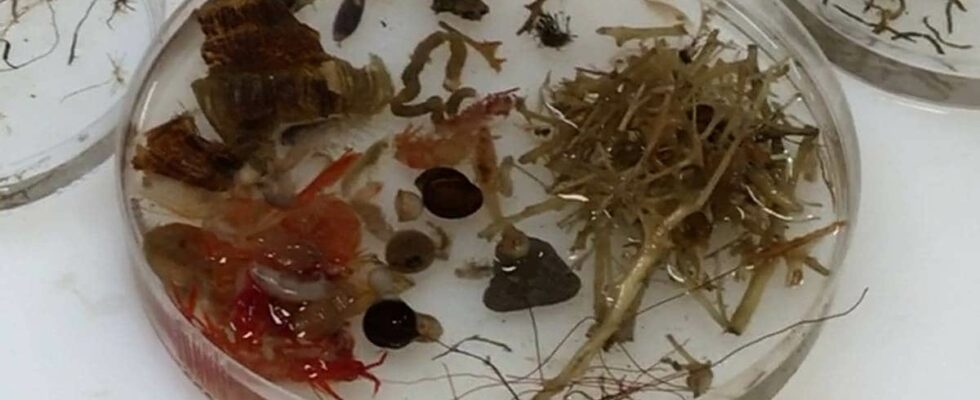More and more people are developing resistance to antibiotics, which creates major challenges in the treatment of infections and diseases. Antibiotic resistance has become one of the biggest threats to public health in recent decades. This is expected to be the most important cause of death by 2050. Now researchers from UiT Norway’s Arctic University and the University of Helsinki may have made an important discovery in the fight against antibiotic-resistant bacteria. After analyzing samples from the seabed and from marine wildlife, they have found bacteria that can be used in the fight against unwanted E.coli bacteria. The bacteria they have found is a so-called actinobacterium. It is a bacterium that is commonly used to make antibiotics and other medicines. But most such bacteria have so far been discovered on land. The bacteria they have now found in the sea shows some promising properties. The actinobacteria they found in the Barents Sea have been analyzed in the laboratory. The findings are promising. Photo: Teppo Rämä Increasing problem In recent years, there has also been a large increase in Norway in people becoming infected with bacteria that antibiotics do not work on. The E.coli bacteria E.coli are intestinal bacteria that are normally found in large quantities in humans and animals. There are several varieties of E.coli, including bacteria that can lead to bleeding bowel disease. Severe infection starts with normal diarrhoea, which can progress to bloody diarrhoea. Complications can be hemolytic uremic syndrome with renal failure (HUS). It affects 8-10 per cent of children under the age of ten who get the dangerous variant of EHEC infection. Young people and adults can also be affected by kidney complications, but this is less common. It is not known why children are more susceptible than adults. Mortality among children with HUS is 3-5 per cent. (Source: National Institute of Public Health/NTB) – It is a general problem that new antibiotics that are developed eventually trigger resistance, says researcher at UiT, Yannik Karl-Heinz Schneider. UiT researcher Yannik Schneider says the bacteria they found in the Barents Sea is promising in the fight against antibiotic resistance. Photo: Teppo Rämä But with a new and self-developed method from the University of Helsinki, the researchers have found that the bacteria they have found in the sea can “disarm” other bacteria. It has its advantages. – Inhibiting the ability of harmful bacteria to cause disease is like disarming a soldier. A compound that can do that is also less likely to trigger antibiotic resistance, says Schneider. He explains that if the antibiotic tries to kill the unwanted bacteria, it puts them under pressure. When that happens, the bacteria tend to develop a resistance to the antibiotic. – But when you can instead simply stop the mechanisms in the bacteria that make them disease-causing, then they are exposed to less pressure, says Schneider. Dag Berild is professor and former senior physician at the Department of Infections at Oslo University Hospital. He has researched antibiotics and antibiotic resistance for over 30 years. He says it is important research that UiT and the University of Helsinki are now doing. Professor Dag Berild says there is important research going on in Tromsø. Photo: news – We are running out of antibiotics, it has been over 30 years since the last proper antibiotic came on the market. In the intervening period, there has been a steady increase in antibiotic resistance. It is therefore particularly important that basic research is carried out in Tromsø and Helsinki, says Berild. Most of the actinobacteria have so far been found on land, but there may be more in the sea. Photo: Yannik Schneider Good and bad news But there is still a lot of work to be done before the bacteria found in the Barents Sea can be sold as antibiotics at a pharmacy near you. – Now it is important to find out more about the substances first, and get the whole structure clarified. Now we are trying to find the best possible growth medium for bacteria, isolate more of the substances and clarify the structure, says Schneider. But they only have a limited selection of the actinobacteria they found in the Barents Sea. There is both good and bad news. In these petri dishes there may be important bacteria for us humans. Photo: TEPPO RÄMÄ – It’s a kind of double-edged sword. There is quite a bit of these substances in what we have found. That’s why we have to insulate more, says Schneider. – But it is also a very good thing, because it means that the substance is quite active and quite strong in its effect. The researchers have made several discoveries in the sea, which they will analyze in more detail. Photo: Teppo Rämä Now he and the other researchers will try to produce more from the bacteria. – We experiment with different growth agents, temperatures and salt concentrations, says Schneider. Researcher Yannik Schneider and his colleagues have painstaking work to find small bacteria in a large ocean. Photo: TEPPO RÄMÄ The bacteria scientists have now analyzed was found on a cruise in the Barents Sea in 2020 with the research ship FF Kronprins Haakon, between Svalbard and Bjørnøya. The researchers have also made several discoveries in the sea after that, which they will look into in more detail in the future. – And then I think it is important to continue looking for new antibiotics. It can be as we do in the ocean, but also with synthetic chemistry or other strategies in drug development, says Schneider. Published 06.09.2024, at 20.53 Updated 06.09.2024, at 21.10
ttn-69
UiT researchers may have found a solution to antibiotic-resistant bacteria in the Barents Sea – news Troms and Finnmark

